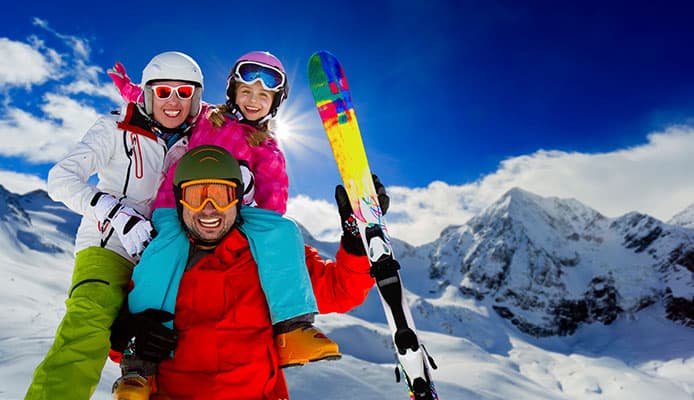
Light and weather conditions on the slopes are constantly changing. You can hit the slopes when it is overcast only to find yourself skiing or snowboarding in bright sunlight soon after. Photochromic ski goggles have lenses that automatically adapt to the changing light intensity providing optimal vision in all kinds of weather. If it’s bright and sunny, the lenses block out more light. When clouds roll and the atmosphere turns gloomy, they let in more light.
They are the ultimate ski goggles, as they have you covered for pretty much anything the sky throws at you. You don’t have to ride with a quiver of backup lenses or slow down to manually swap lenses. Hit the slopes with a quality pair of ski goggles that change with light and and you can ski from dawn till dusk while enjoying the best optical experience from sun to snow. The following are the best photochromic ski goggles currently available on the market. Our reviews and buying guide will help you identify the best one for the conditions you ski or snowboard in.
OUR TOP PICK
Smith Optics IO Mag
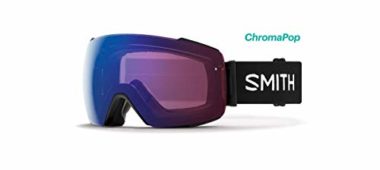
- Stand Out Features - Why We Love It
- Comes with photochromic rose flash and regular black lenses
- Quick change interchangeable lens system
- No optical distortion with changes in elevation
- Large spherical and frameless field of vision
- TLT lens technology and 5X anti-fog technology
- Responsive fit frame and 3-layer DriWix face foam
- Dual-axis outrigger positioning system
- Available in Asian fit
VLT: Photochromic: 30 – 50%, Black: 12%
Lens Color: Rose flash, Black
Weight: 0.6 ounces
EDITORS CHOICE
Julbo Skydome
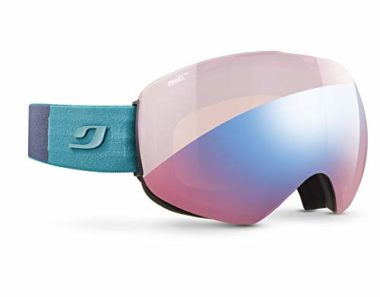
- Stand Out Features - Why We Love It
- A wide VLT range of 13-72% and versatile zebra light red tint
- Quick response to changes in light conditions
- Wide field of view and panoramic lenses
- Double lenses and integrated anti-fog and hydrophobic coating
- Two layers of soft foam padding and built-in lens ventilation
- Lightweight and flexible anatomic design
- Lifetime warranty against manufacturing defects
VLT: 13-72%
Lens Color: Zebra Light Red
Weight: 10.6oz/135g
BEST VALUE
Julbo Aerospace
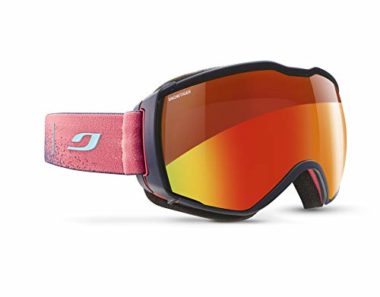
- Stand Out Features - Why We Love It
- Affordably priced and amazing bang for the buck
- Category 2-3 lenses with a versatile 13-40% VLT
- Polarization eliminates 50% of glare
- Reactiv NXT spherical lens
- Dual lens design with anti-fog coating
- Superflow ultra-venting technology
- Two layers of foam
VLT: 13 – 40%
Lens Color: Snow Tiger
Weight: 10.6oz/135g
Bolle Z5 OTG
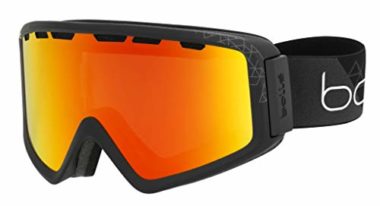
- Stand Out Features - Why We Love It
- Over the glasses (OTG) ski goggles
- Wide class 1 to 3 VLT range
- Dual-pane lenses and anti-fog coating
- Anti-scratch coating on the outer lenses
- Ultra-soft micro-fleece and dual-density foam
- Compatible with helmets from all major brands
VLT: 14-44%
Lens color: Photochromic Fire Red
Weight: 7oz
Revo Onix Polarized
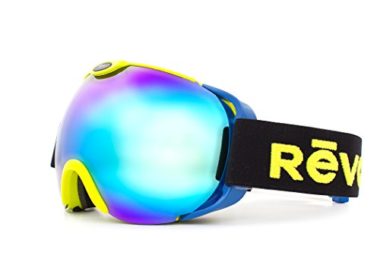
- Stand Out Features - Why We Love It
- Photochromic, polarized and mirrored lenses
- Polarization blocks glare bouncing off the snow
- Mirrored coating reduces VLT and selectively manages blue light
- Spherical lenses renowned for their top-level quality
- Triple layer face foam and flexible frame material
- Adjustable outriggers compatible with a wide range of helmets
- Two-year manufacturers warranty
VLT: 12 – 32%
Lens Color: Blue Water
Weight: 2.2lbs
How To Choose Photochromic Ski Goggles – Buying Guide
All photochromatic lenses automatically adapt to changing light intensity but that is as far as their similarities go. They have different lenses quality, shapes, tints, VLT ranges, and many other differences. Careful consideration is essential in order to ensure that you pick the right ski goggles<span style=”font-weight: 400;”> that will serve you well on the snow. Below are the features to look for.
Related Post: How To Choose Ski Goggles
UV Protection
The sun’s ultraviolet rays are especially intense on the slopes! The air is thin at high altitude and therefore allows more rays to pass through and reach the ground. For every 1,000 meters you climb above sea level, UV radiation intensity goes up by 16 percent! Exposure to these rays can damage skin and eyes. Ski and snowboard goggles should provide 100% UV protection from UVA, UVB and UVC rays. All the best photochromic snowboard goggles above fulfill this requirement.
Polarization
White and sleek, snow is very reflective – fresh snow reflects almost 80 percent of the UV rays that hit it! Polarization is what can protect you from the reflected rays or glare. When skiing in bright out conditions, polarization is a great feature to have. Polarized lenses have a special coating that blocks glare thereby increasing visual clarity, and contrast, allowing you to see the snow and contours clearly.
Lenses
Lenses are the most important part of snow goggles. They determine the quality of optics you see when wearing your ski goggles. Carefully assess what kind of lenses the transition ski goggles you choose come with – their field of view, shape, tint, and anti-fog features as follows:
Lenses Tint
You may be drawn to a cool tint but it may not suit the weather you ski in. For clarity of vision and eye comfort, it is very important to choose the lens color that provides the right color definition, contrast, depth perception and visible light transmission (VLT) for the conditions you ski in.
Light tints such a rose, yellow, gold and amber have a high VLT, allow more light to pass through and are excellent on low-light conditions. Night skiing goggles have clear lenses. Dark tints such as copper, dark brown, dark gray and dark green have a low VLT and excel on bluebird days where the sun shines bright.
You might also be interested in:
Shape
Spherical lenses are ideal! They are curved on the horizontal axis as well as on the vertical axis, just like our eyes. This shape provides a large field of vision and reduces glare, distortion and fogging, as it allows for more airflow. If you’re on a tight budget, cylindrical lenses that are curved on the vertical axis but flat on the horizontal axis usually have much more affordable price tags but this is at the expense of their peripheral vision and glare reduction.
Field of Vision
A wide field of vision is essential for a clear and unobstructed view all around. Spherical lenses have a larger field of view and you can see more of what is below, above and to the sides. The larger the goggles, the larger the field of vision, as the wider and longer shape extends your peripheral view. A frameless design also increases the field of vision.
Anti-fog Features
When the freezing cold mountain air meets the warm air within your googles, condensation occurs and moisture can build up and ski goggles fogging up can be a problem. Googles that do not fog up have anti-fog features such as dual-layered lenses, anti-fog coatings built into the lenses, and vents that let warm air and condensation out.
Ventilation
While ski goggles should protect your eye area from the biting cold, ventilation is also essential so you don’t get hot and sweaty and so the lenses don’t steam up and obstruct vision. Look for vents along the sides, top, and bottom, through which warm humid air from breathing can escape.
Fixed Lenses vs Interchangeable Lenses
Transition googles with interchangeable lenses offer the ultimate flexibility. If you ski in variable conditions, you can purchase photochromic lenses in different hues for the best vision in different conditions. Swapping the lenses should be easy so you can switch them on the fly without hassle. If you ski for only a few hours and don’t experience huge changes in light intensity, you can choose suitable googles with fixed lenses.
Fit
Be sure to order the right fit. Ski goggles come in small, medium and large fit profiles. Small fit goggles have a narrower, shallower and shorter profile that suits kids, teens, and adults with small heads and faces.
A medium fit is the universal fit that fits most people. Large fit googles have a wide, tall and deep profile and suit large faces. If you have high cheekbones and a low nose bridge, an Asian fit might fit you best.
Comfort
In addition to being well-ventilated and fitting firmly and comfortably without painful pressure on your face or uncomfortable wiggling, the goggles should feel comfortable on the face. The part sitting directly on your face should be thick and soft. The elastic strap and clip or buckle for securing the goggles to your head should feel comfortable.
Foam Padding Types
The part that rests directly on your face is the goggles padding. It is a soft, porous layer that prevents the goggles from applying pressure on your face. It should gently cup your face to provide a custom and comfortable fit and feel smooth. It should also be thick but not too thick that it hinders airflow. Two or three layers of thin foam padding are ideal to cushion your face while allowing airflow to prevent sweating and fogging.
Quality
Photochromic snowboard googles don’t come cheap. You will definitely want to make sure you invest your money on quality goggles that offer excellent performance and durability. To make a smart choice and get the best value for your money, look into the brand reputation, quality of lenses and frame material, what users have to say about it in its photochromic ski goggles reviews and the kind of warranty offered.
FAQs
Q: What is VLT?
Q: What Are Photochromic Ski Goggles?
Q: When Should I Use Photochromic Ski Goggles?
Q: What Is The Difference Between Photochromic and Regular Ski Goggles?
Globo Surf Overview
While more expensive that regular snow goggles, the versatility and convenience photochromic snowboard goggles offer can’t be beat. You are free to focus on the fun while the lenses do all the hard work of ensuring you have optimal contrast and clear vision in all kinds of conditions. Be sure to pick the best photochromic ski goggles with a VLT range and lenses tint that will suit the weather and terrain you ski or snowboard in.
More Snow Ski Gear Reviews:
- Ski And Snowboard Waxes
- Ski Bindings
- Ski Glove Liners
- Ski Knee Braces
- Ski & Snowboard Backpacks
- Ski Hats
- Cross Country Skis
- Ski Goggles
- Ski Poles
- Ski Helmets
- Women’s Ski Jackets
- Ski Gloves
- All Mountain Skis
- Womens Ski Gloves


